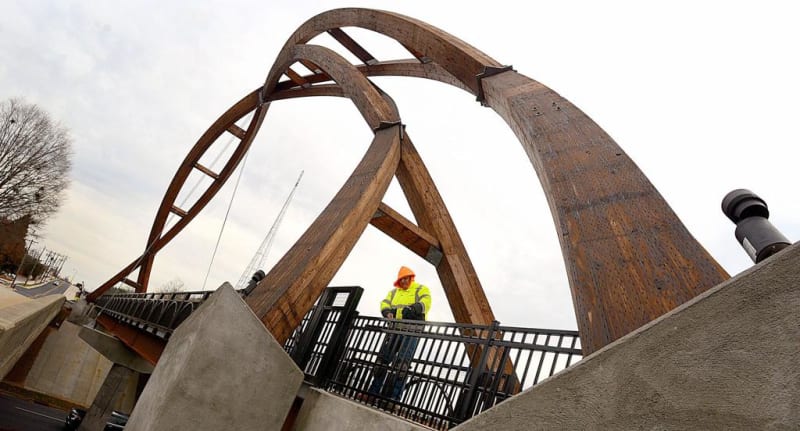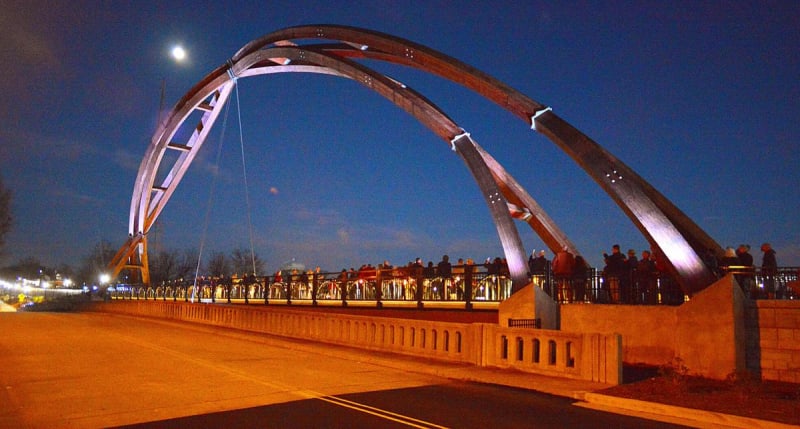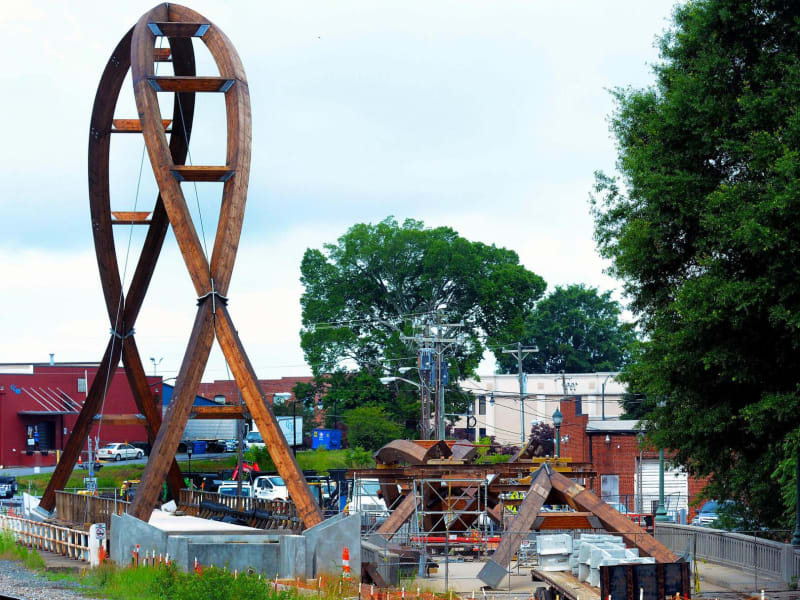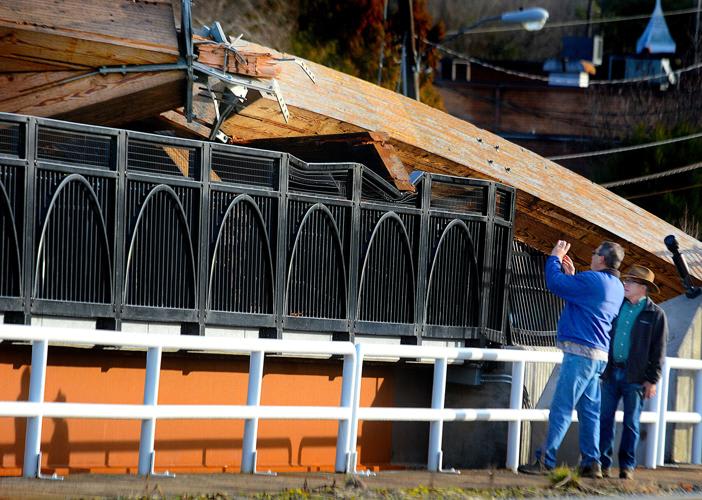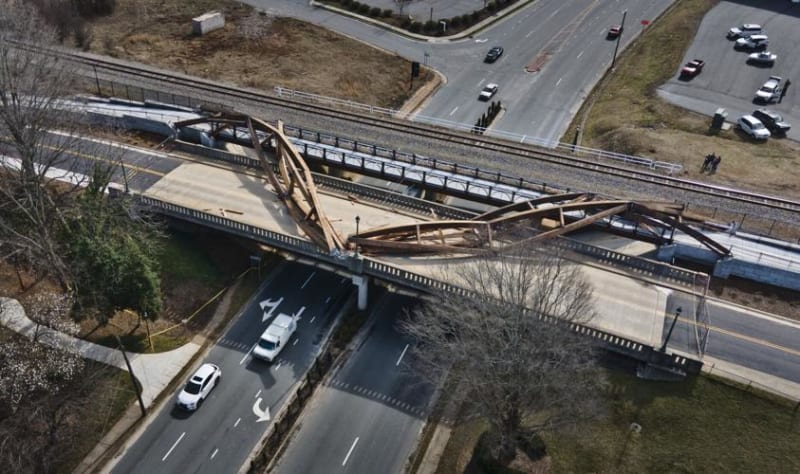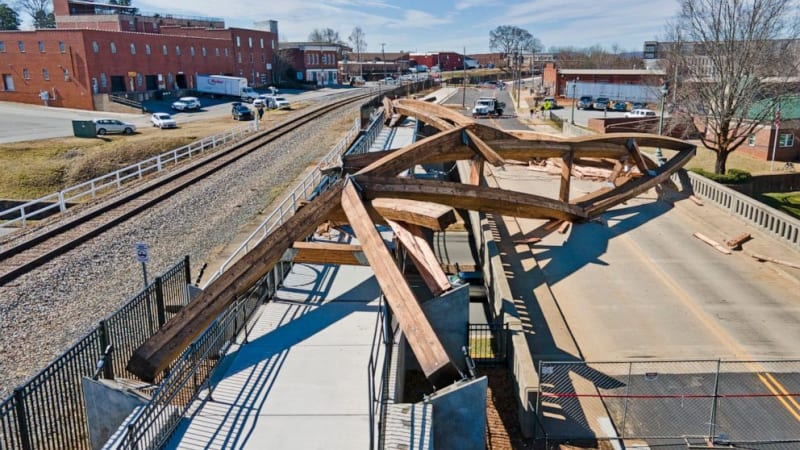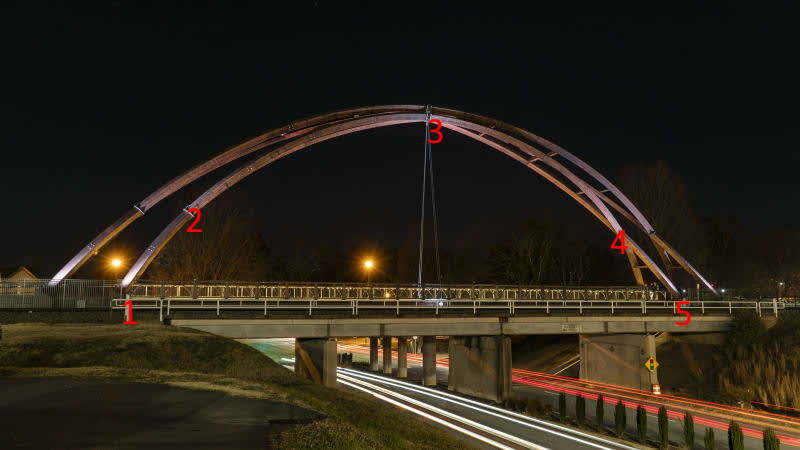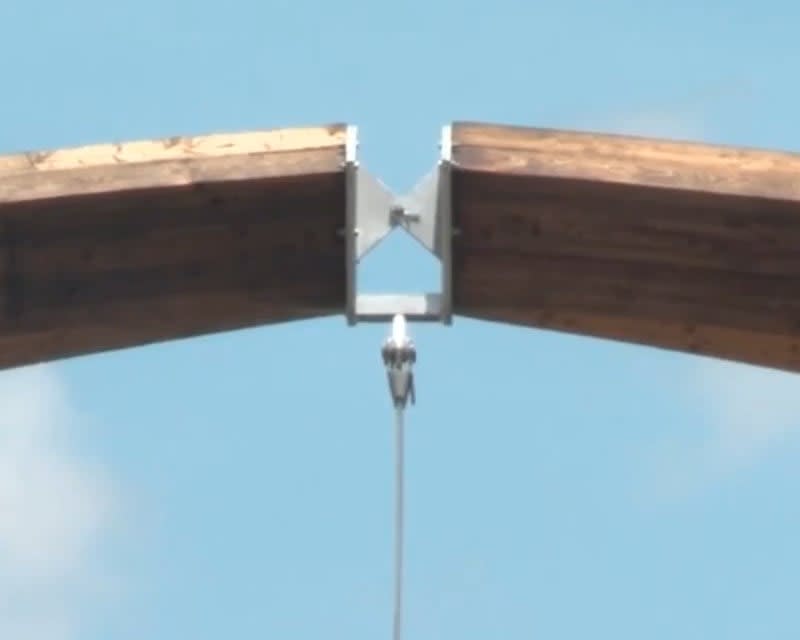Navigation
Install the app
How to install the app on iOS
Follow along with the video below to see how to install our site as a web app on your home screen.
Note: This feature may not be available in some browsers.
More options
Style variation
-
Congratulations TugboatEng on being selected by the Eng-Tips community for having the most helpful posts in the forums last week. Way to Go!
You are using an out of date browser. It may not display this or other websites correctly.
You should upgrade or use an alternative browser.
You should upgrade or use an alternative browser.
40-ton timber arches collapse in Hickory, NC 35
- Thread starter bugbus
- Start date
- Status
- Not open for further replies.
This is the arch bridge I was trying to remember, in which the arch splits into 'wishbones' at the ends. Perhaps not a proximate reason for that collapse, but a weak point nevertheless.
-
1
- #43
There was also the Chirajara bridge in Colombia
TTFN (ta ta for now)
I can do absolutely anything. I'm an expert! faq731-376 forum1529 Entire Forum list
TTFN (ta ta for now)
I can do absolutely anything. I'm an expert! faq731-376 forum1529 Entire Forum list
There appears to be a significant gap at the apex of the arches with a simple, single bolt connection. I can't yet imagine how the guy wire mounts were included but the mount for the lower arch came away clean (as seen in previous images laying on the deck) and the mount for the upper arch appears still fixed to the west weldment but there is no damage to the east weldment. I guess the guy wire for the upper arch can pass through the gap in the lower arch connection.
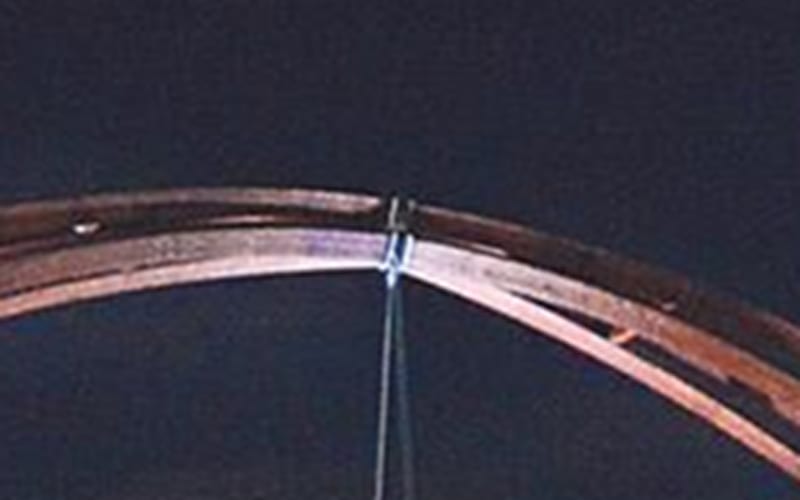
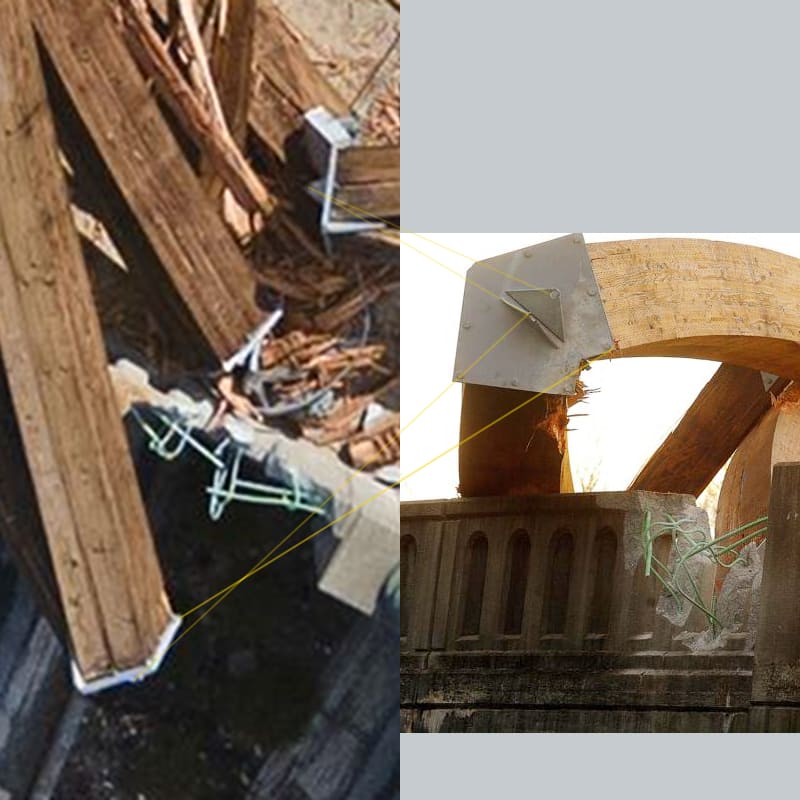


-
1
- Thread starter
- #46
That pin connection looks awfully flimsy ^. The pin holes in the clevis plates have almost no edge distance. The plates appear very thin. Was this really holding the whole arch together??
The area circled in green appears to have been torn out. Could this tear-out failure of the pin have caused the arch to collapse? Alternatively, the other side of the clevis appears to have collapsed at its base, which is not surprising considering how thin it is. Could this have initiated the pin to become dislodged and tear out of the other side?
I would image that under wind loading, one side of the clevis would have been in tension and the other in compression. Perhaps this bending through the connection was overlooked, because it might have been thought that the guy wires would eliminate such an effect. But the guy wires appear to be awfully flimsy as well and not in a particularly effective arrangement as I mentioned in my first post.

The area circled in green appears to have been torn out. Could this tear-out failure of the pin have caused the arch to collapse? Alternatively, the other side of the clevis appears to have collapsed at its base, which is not surprising considering how thin it is. Could this have initiated the pin to become dislodged and tear out of the other side?
I would image that under wind loading, one side of the clevis would have been in tension and the other in compression. Perhaps this bending through the connection was overlooked, because it might have been thought that the guy wires would eliminate such an effect. But the guy wires appear to be awfully flimsy as well and not in a particularly effective arrangement as I mentioned in my first post.

Connection of lower arch prior to work stoppage to address structural concerns (May 20, 2021):
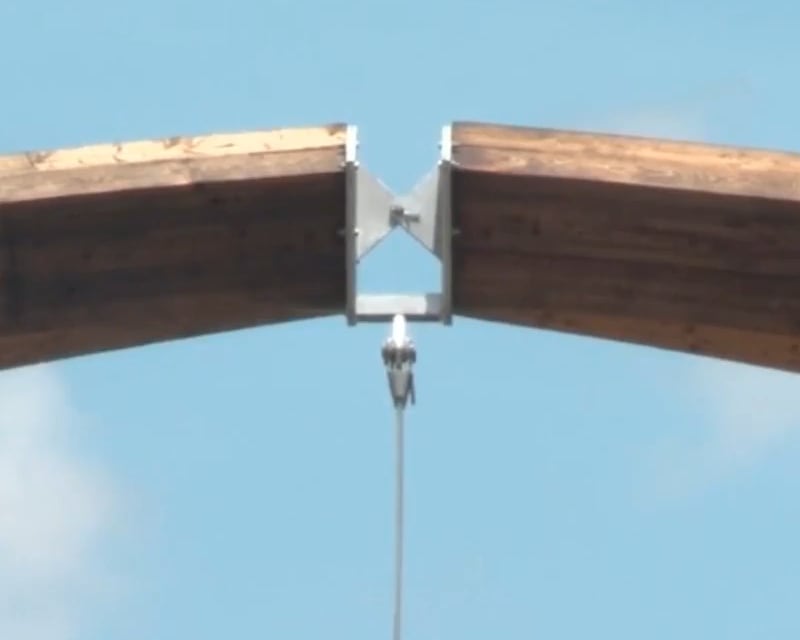
(Video source)
Compare to the piece on the bridge deck ???:
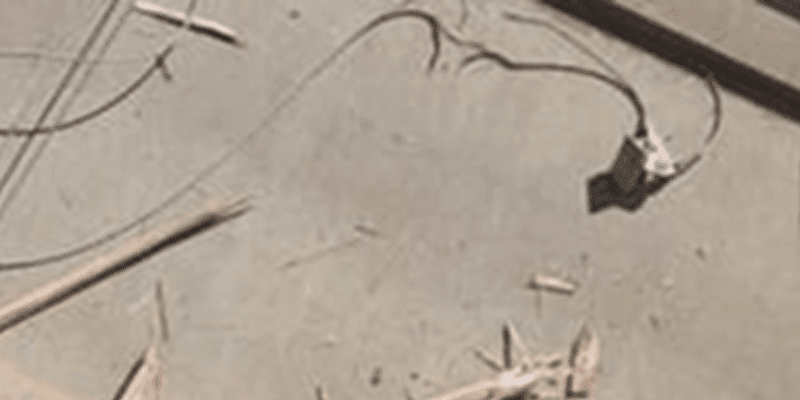
EDIT: It appears that this clevis mount is indeed modified before the completion of the project. (see further posts below)

(Video source)
Compare to the piece on the bridge deck ???:

EDIT: It appears that this clevis mount is indeed modified before the completion of the project. (see further posts below)
gusmurr (Structural) (OP) 22 Feb 22 01:48 said:... under wind loading, ...
The structure likely experienced buffeting during its entire life. It is a large sail of significant mass so any movement would likely work over the joints pretty good.
Comedy Break - Clarke and Dawe - The Front Fell Off except in this case, The Top Fell Off! ... not typical, not normal, unusual
- Thread starter
- #50
That was the purpose of those huge cable stays on the Florida pedestrian bridge that collapsed, too. No one seems to want to take really clear photos of the connections, it would appear. That top 'pinned' connection is really strange looking and really flimsy by the look of it.
Rather than think climate change and the corona virus as science, think of it as the wrath of God. Feel any better?
-Dik
gusmurr:
"Wow! If this "connection" isn't the cause of the collapse, I will eat my hat."
When I look at the pictures of the completed decoration, I don't see a connection as shown in that photo.
The connection you are referring to appears to have been temporary and long gone. If so, it's kind of hard to see how it could cause a collapse, since it didn't exist anymore.
spsalso
I was able to see the news article... had to set my VPN to the US to see it. Hokie's correct in the the material is incised, so it's PT and not likely good firewood. The manner of repair seems flaky. I don't know what failed, but adhesives and clamps with self tapping screws seems a little odd.
Rather than think climate change and the corona virus as science, think of it as the wrath of God. Feel any better?
-Dik
Rather than think climate change and the corona virus as science, think of it as the wrath of God. Feel any better?
-Dik
agree Hokie... the similarity is that they, too, were decorative only, like the cables in this one. I don't know their function (even if only decorative) and what affect they had, if any, on the collapse. The Florida stays had the capability of supporting a load of several hundred kips... they weren't detailed as decorative... and they had nothing to do with the Florida failure.
Rather than think climate change and the corona virus as science, think of it as the wrath of God. Feel any better?
-Dik
dik,
The Florida bridge stays may not have been detailed as decoration, but that was the intent, according to the project description. But the whole wooden monstrosity in NC was a sculpture, not a load bearing span. The cables may have been intended for lateral stability...maybe as an afterthought.
Tomfh, agreed. I would say that a traditional 3-hinge arch turned itself into a 5-hinge arch with the failure of those 'knuckles' at the top of the wishbones, and that is not a stable structure.
The Florida bridge stays may not have been detailed as decoration, but that was the intent, according to the project description. But the whole wooden monstrosity in NC was a sculpture, not a load bearing span. The cables may have been intended for lateral stability...maybe as an afterthought.
Tomfh, agreed. I would say that a traditional 3-hinge arch turned itself into a 5-hinge arch with the failure of those 'knuckles' at the top of the wishbones, and that is not a stable structure.
That may have been the intent, but had the structure 'stood up', whether it wanted to or not, the cable stays would have had a real impact on the strength and behavour of the structure. Just because you label them as decorative, unless you detail them as such, they may not be.
As I noted earlier, "I'm not sure what the cables are for... if to provide support of something below, they might have been OK. If to provide lateral support at the top, not so good. Any horizontal load at the top would greatly increase the force in the cable because of the 'steep slope'. We'll have to wait and see why it 'broke'."
Rather than think climate change and the corona virus as science, think of it as the wrath of God. Feel any better?
-Dik
As I noted earlier, "I'm not sure what the cables are for... if to provide support of something below, they might have been OK. If to provide lateral support at the top, not so good. Any horizontal load at the top would greatly increase the force in the cable because of the 'steep slope'. We'll have to wait and see why it 'broke'."
Rather than think climate change and the corona virus as science, think of it as the wrath of God. Feel any better?
-Dik
Alistair_Heaton
Mechanical
I have a feeling the cables are a part of the design mainly for dynamic response.
The thing does have an aerofoil look to it from certain angles. Including the one that the wind was blowing when it collapsed.
The thing does have an aerofoil look to it from certain angles. Including the one that the wind was blowing when it collapsed.
I don't know... if they were for dynamic response, it would likely be lateral since that's the weak direction. The steep slope would increase cable loads substantially, and the vertical loading on the arches. The arches had been subjected to greater wind loads earlier this year. We'll have to wait to find out the cause from some other source. I'm still curious about what the earlier failure was and the manner of repair. That, too, might have bearing.
Rather than think climate change and the corona virus as science, think of it as the wrath of God. Feel any better?
-Dik
- Status
- Not open for further replies.
Similar threads
- Replies
- 35
- Views
- 13K
- Replies
- 13
- Views
- 13K
- Replies
- 8
- Views
- 6K
- Replies
- 1
- Views
- 658
- Replies
- 48
- Views
- 12K

